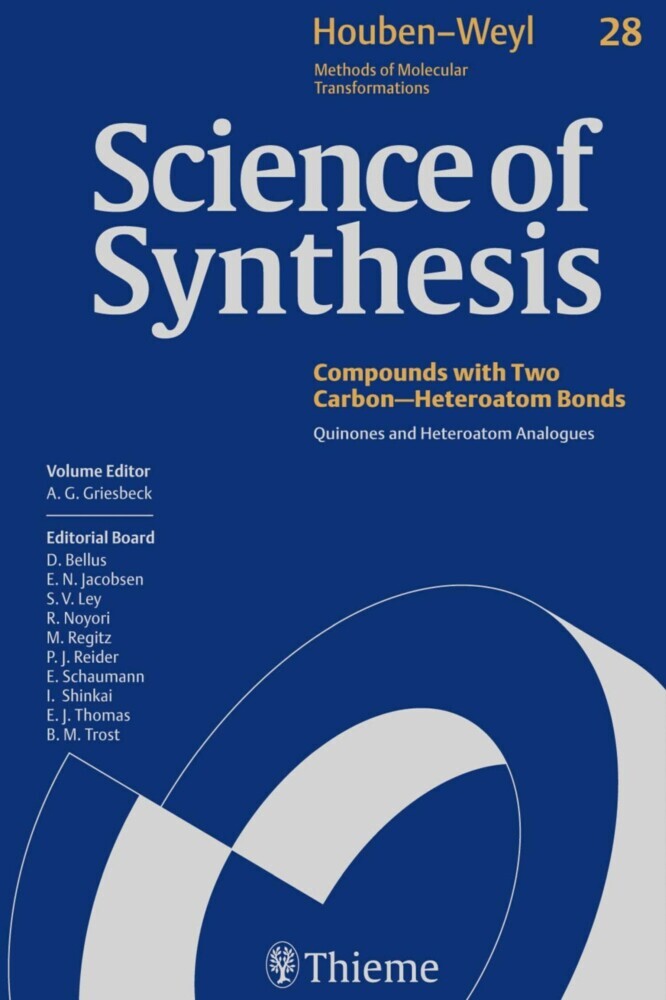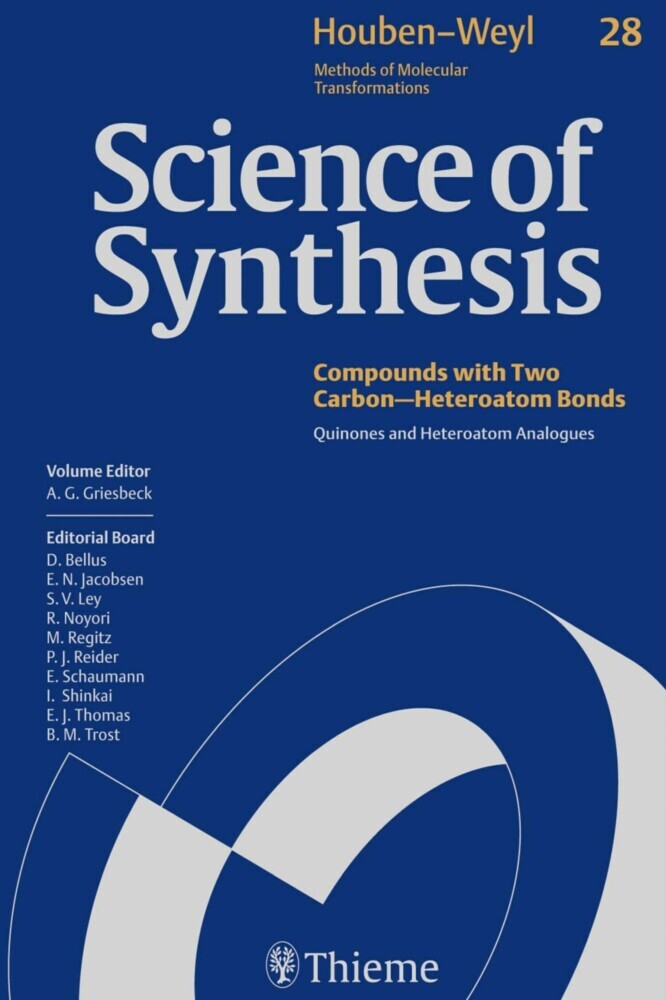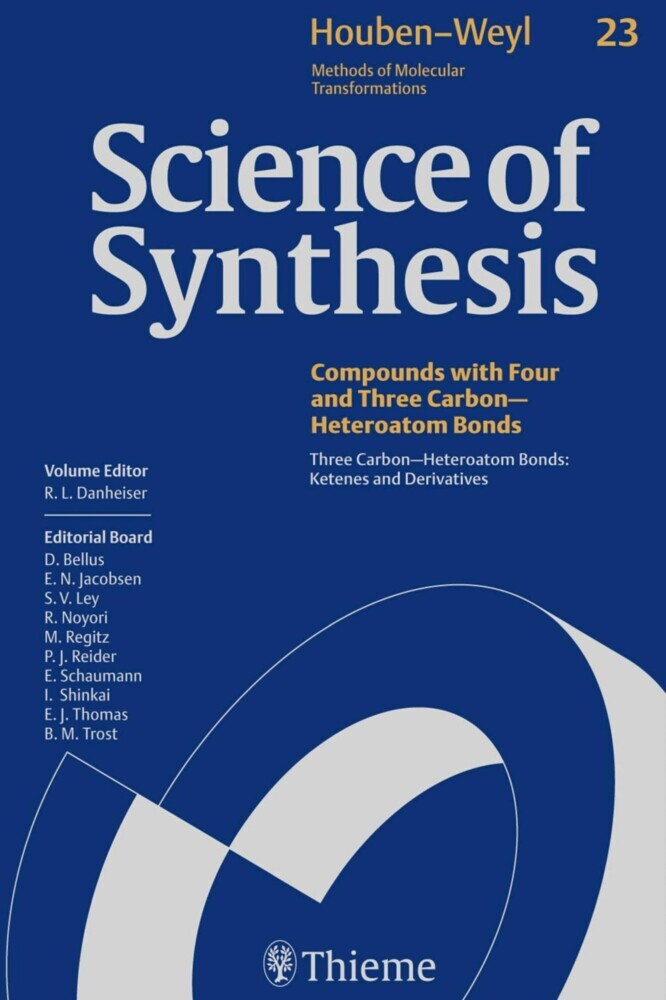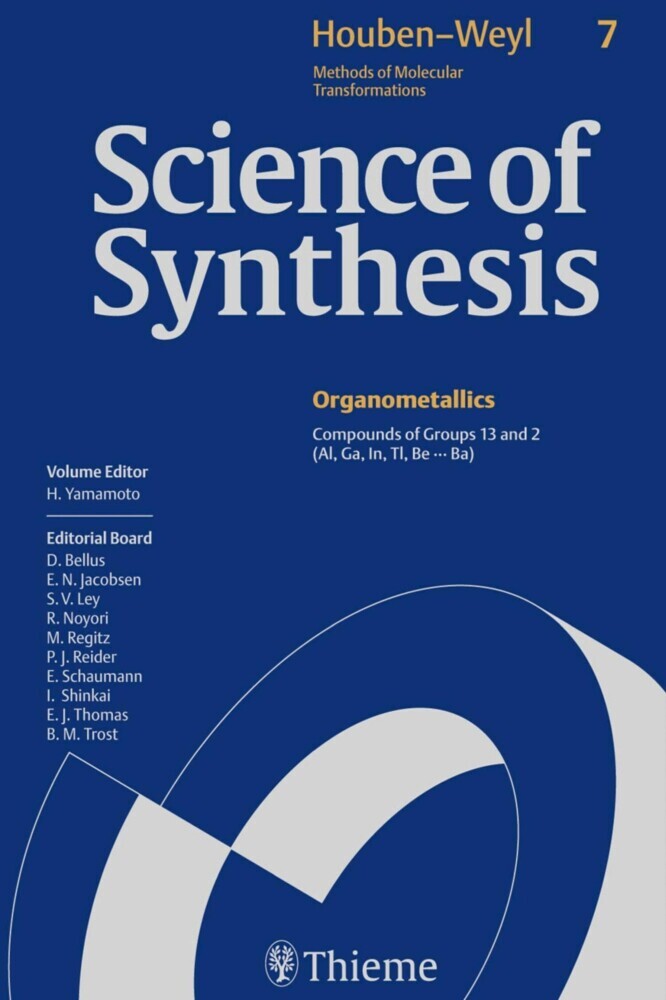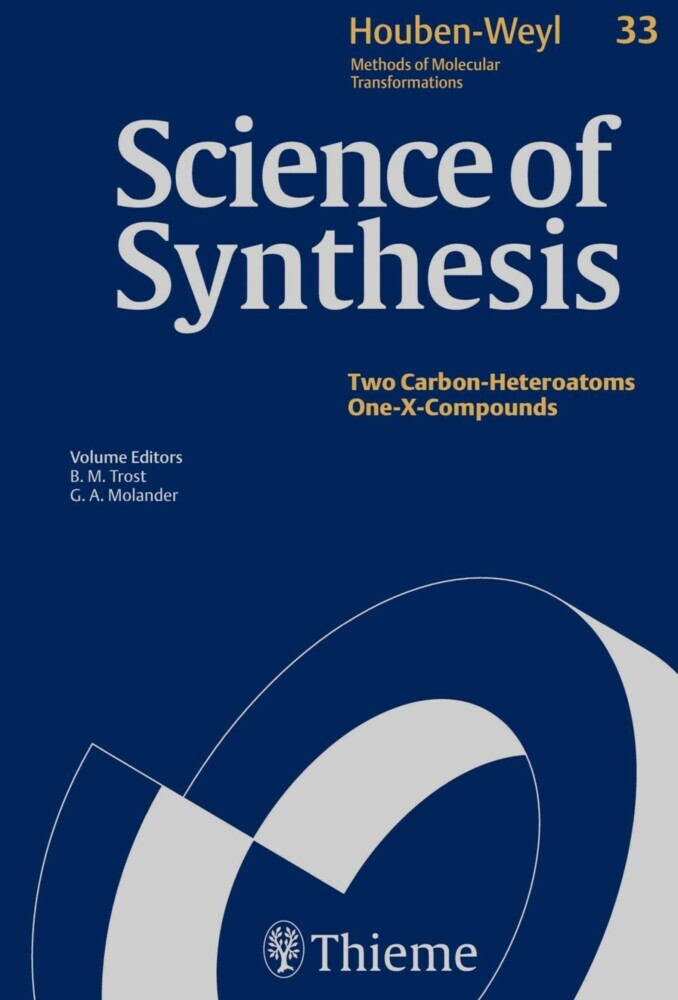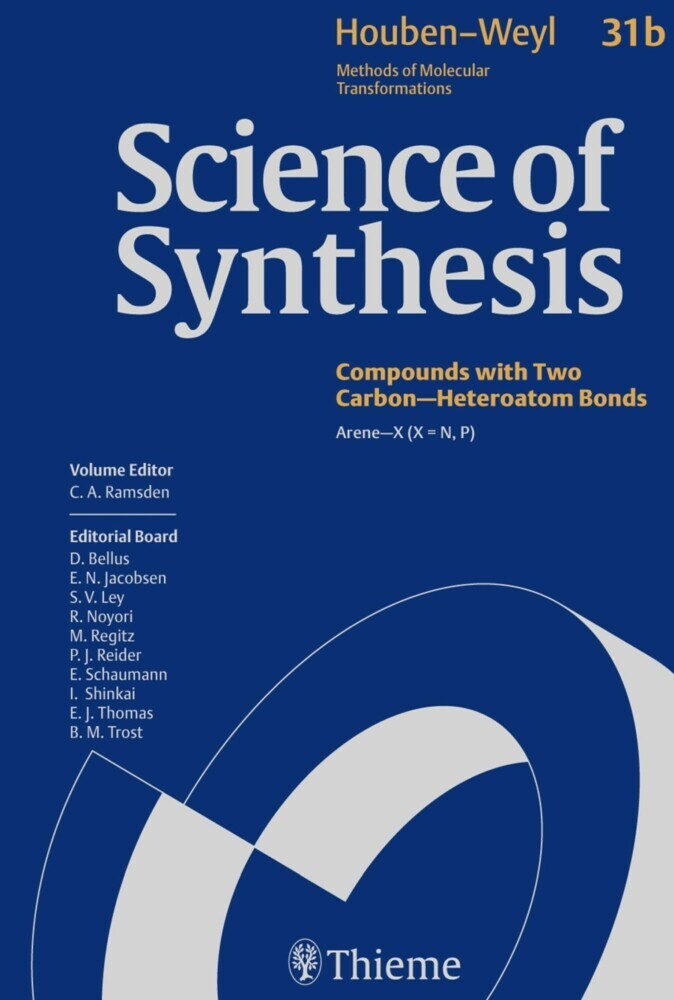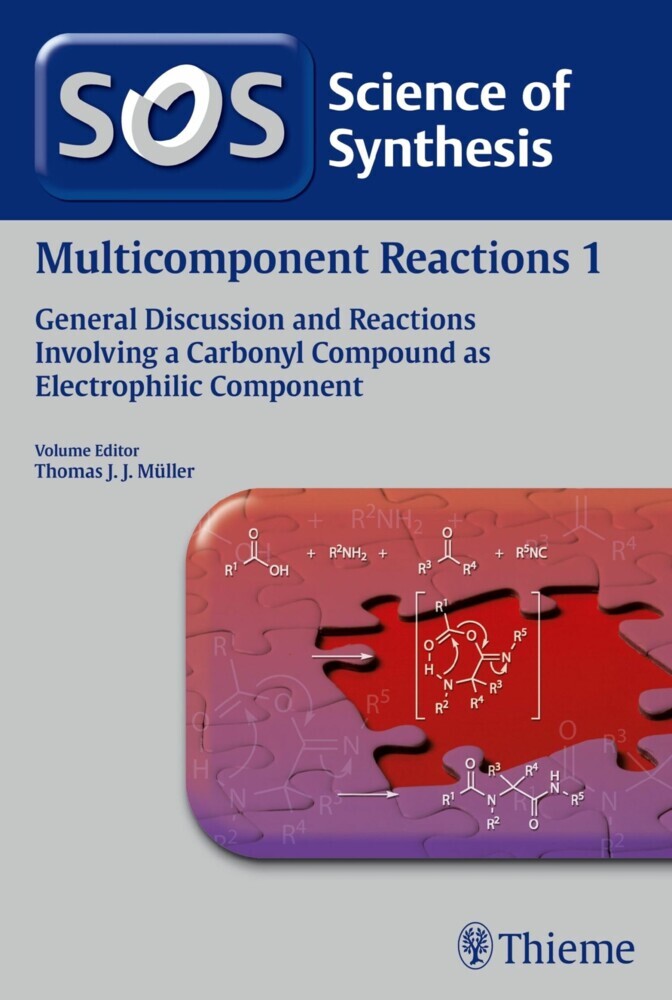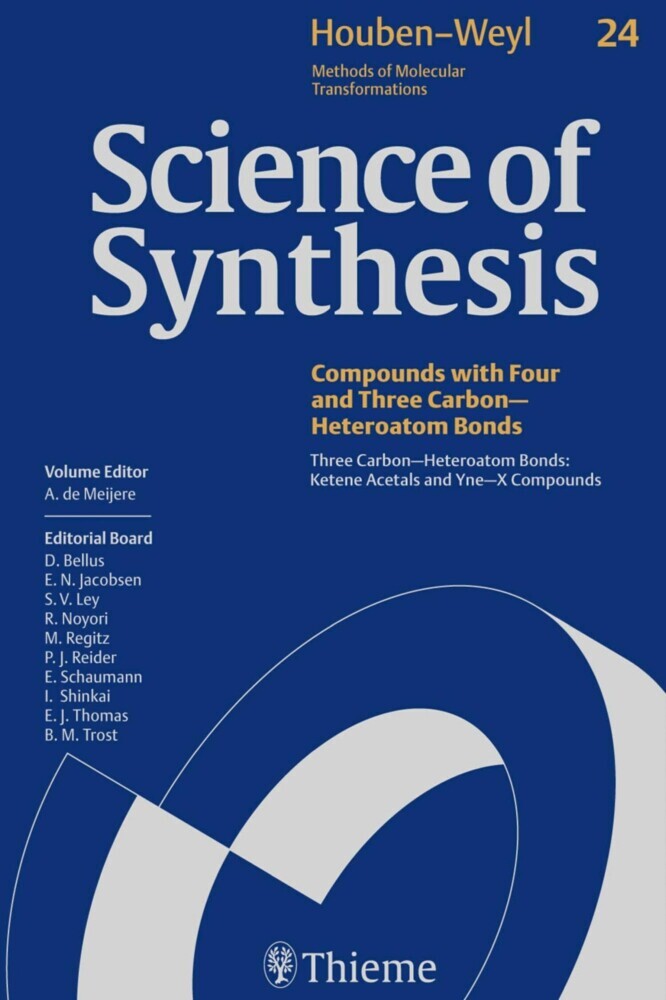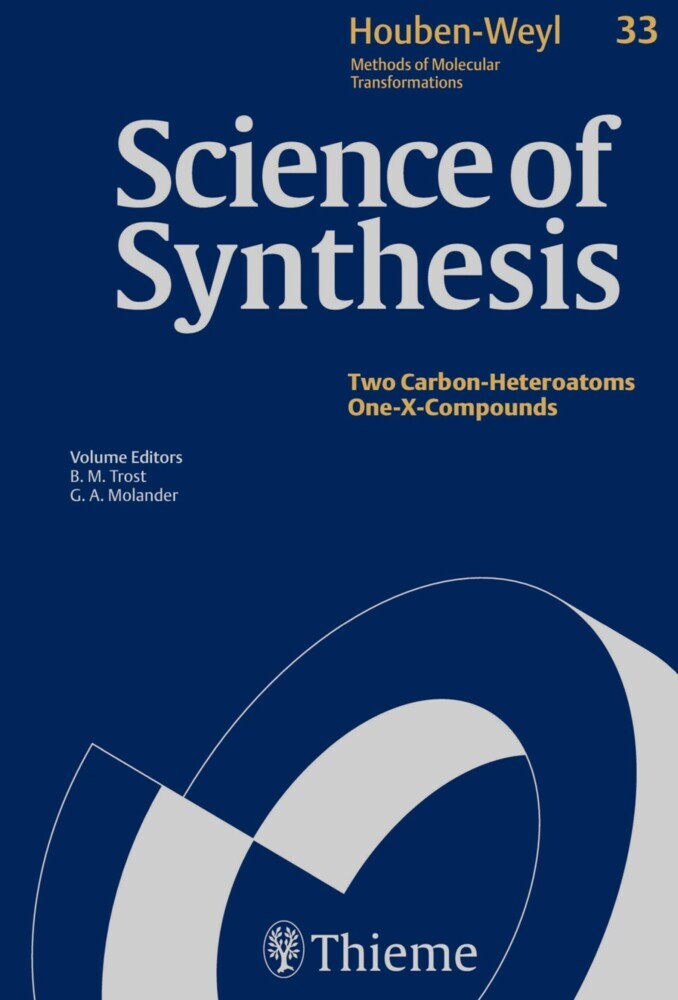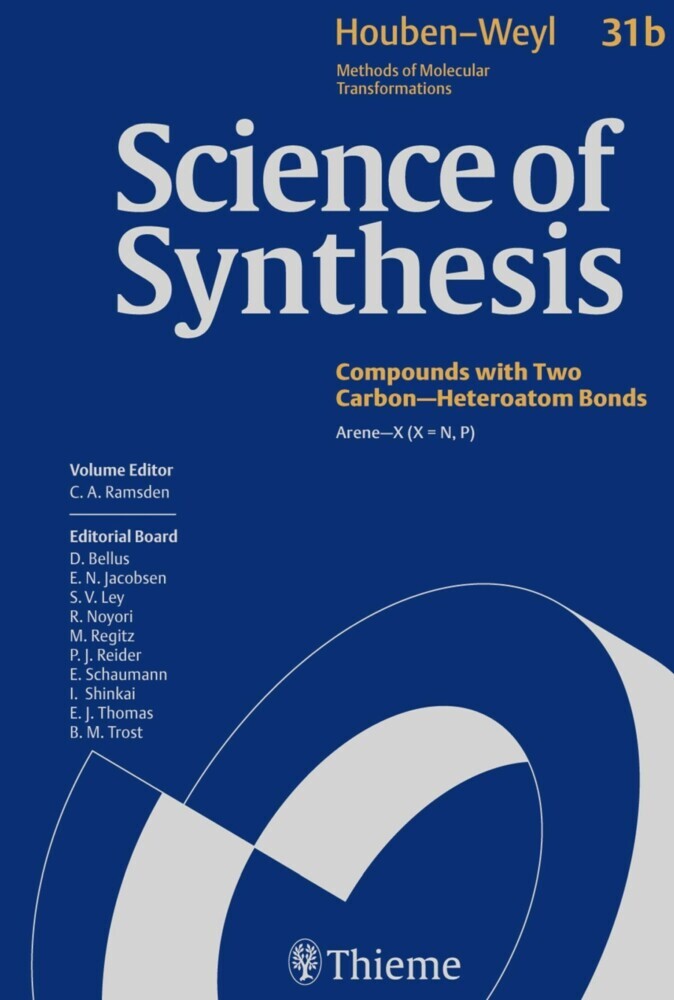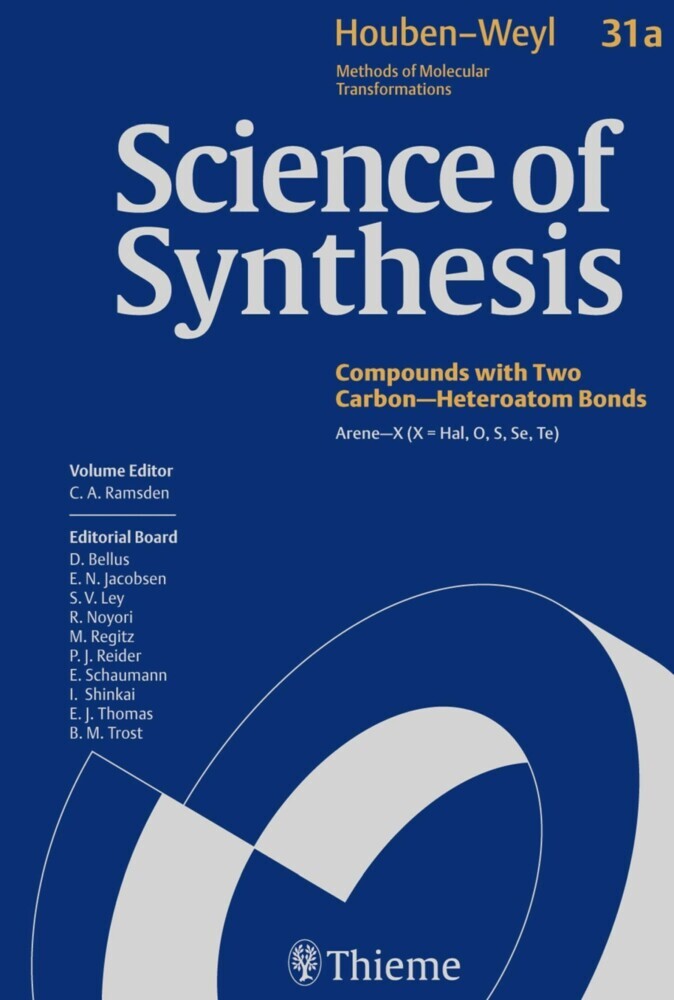Science of Synthesis: Houben-Weyl Methods of Molecular Transformations Vol. 28
Quinones and Heteroatom Analogues
Science of Synthesis: Houben-Weyl Methods of Molecular Transformations Vol. 28
Quinones and Heteroatom Analogues
Science of Synthesis: Houben-Weyl Methods of Molecular Transformations is the entirely new edition of the acclaimed reference series Houben-Weyl, the standard synthetic chemistry resource since 1909. This new edition is published in English and will comprise 48 volumes published between the years 2000 and 2008.
Science of Synthesis is a quality reference work developed by a highly esteemed editorial board to provide a comprehensive and critical selection of reliable organic and organometallic synthetic methods. This unique resource is designed to be the first point of reference when searching for a synthesis strategy.
- Contains the expertise of presently 400 leading chemists worldwide
- Critically evaluates the preparative applicability and significance of the synthetic methods
- Discusses relevant background information and provides detailed experimental procedures
For full information on the Science of Synthesis series, visit the Science of Synthesis Homepage
1;Science of Synthesis - Volume 28: Quinones and Heteroatom Analogues;1 1.1;Title page;3 1.2;Imprint;5 1.3;Preface;6 1.4;Volume Editor's Preface;8 1.5;Overview;10 1.6;Table of Contents;14 1.7;Introduction;42 1.8;28.1 Product Class 1: Benzo-1,4-quinones;54 1.8.1;28.1.1 Product Subclass 1: Metal-Substituted Benzo-1,4-quinones;54 1.8.1.1;28.1.1.1 Synthesis of Product Subclass 1;55 1.8.1.1.1;28.1.1.1.1 Method 1: Tin-Substituted Benzo-1,4-quinones by Cyclobutenone Ring Expansion;55 1.8.1.1.2;28.1.1.1.2 Method 2: Tin-Substituted Benzo-1,4-quinones by Stannylation of Benzo-1,4-quinones;57 1.8.1.1.3;28.1.1.1.3 Method 3: Silicon-Substituted Benzo-1,4-quinones by Reaction of Organolithium Species;57 1.8.1.1.4;28.1.1.1.4 Method 4: Silicon-Substituted Benzo-1,4-quinones by Cyclobutenone Ring Expansion;58 1.8.1.1.5;28.1.1.1.5 Method 5: Silicon-Substituted Benzo-1,4-quinones by Carbene Annulation;61 1.8.1.1.6;28.1.1.1.6 Method 6: Silicon-Substituted Benzo-1,4-quinones by Nucleophilic Substitution;62 1.8.1.1.7;28.1.1.1.7 Method 7: Boron-Substituted Benzo-1,4-quinones by Carbene Benzannulation;63 1.8.1.2;28.1.1.2 Applications of Product Subclass 1 in Organic Synthesis;63 1.8.1.2.1;28.1.1.2.1 Method 1: Palladium-Catalyzed Cross-Coupling Reactions of Tin-Substituted Benzo-1,4-quinones;63 1.8.1.2.1.1;28.1.1.2.1.1 Variation 1: Allylation;64 1.8.1.2.1.2;28.1.1.2.1.2 Variation 2: Coupling with Aromatic and Heteroaromatic Iodides;64 1.8.1.2.1.3;28.1.1.2.1.3 Variation 3: Oxidative Dimerization;66 1.8.1.2.1.4;28.1.1.2.1.4 Variation 4: Benzannulation;67 1.8.1.2.2;28.1.1.2.2 Method 2: Silicon/Halide-Exchange Reactions of Silicon-Substituted Benzo-1,4-quinones;68 1.8.1.2.3;28.1.1.2.3 Method 3: Oxidation of the Boron Substituent in Boron-Substituted Benzo-1,4-quinones;69 1.8.2;28.1.2 Product Subclass 2: Halogen-Substituted Benzo-1,4-quinones;72 1.8.2.1;28.1.2.1 Monohalobenzo-1,4-quinones;72 1.8.2.1.1;28.1.2.1.1 Synthesis of Monohalobenzo-1,4-quinones;72 1.8.2.1.1.1;28.1.2.1.1.1 Method 1: Oxidation of 4-Amino-3-iodophenol Using Potassium Dichromate;72 1.8.2.1.1.2;28.1.2.1.1.2 Method 2: Oxidation of 1,4-Hydroquinones with Persulfate or Ammonium Cerium(IV) Nitrate;73 1.8.2.1.1.3;28.1.2.1.1.3 Method 3: Oxidation of 1,4-Hydroquinones Catalyzed by an Oxovanadium Complex;75 1.8.2.1.1.4;28.1.2.1.1.4 Method 4: Oxidation of 1,4-Hydroquinones Catalyzed by Gaseous Nitrogen Oxides;75 1.8.2.1.1.5;28.1.2.1.1.5 Methods 5: Miscellaneous Oxidations of Anilines and 1,4-Hydroquinones;76 1.8.2.1.2;28.1.2.1.2 Applications of Monohalobenzo-1,4-quinones in Organic Synthesis;76 1.8.2.2;28.1.2.2 2,3-Dihalobenzo-1,4-quinones;80 1.8.2.2.1;28.1.2.2.1 Synthesis of 2,3-Dihalobenzo-1,4-quinones;80 1.8.2.2.1.1;28.1.2.2.1.1 Method 1: Halogenation of Benzo-1,4-quinone;80 1.8.2.2.1.2;28.1.2.2.1.2 Method 2: Oxidation of a 1,4-Hydroquinone Using Ammonium Cerium(IV) Nitrate;82 1.8.2.2.2;28.1.2.2.2 Applications of 2,3-Dihalobenzo-1,4-quinones in Organic Synthesis;82 1.8.2.3;28.1.2.3 2,5-Dihalobenzo-1,4-quinones;83 1.8.2.3.1;28.1.2.3.1 Synthesis of 2,5-Dihalobenzo-1,4-quinones;83 1.8.2.3.1.1;28.1.2.3.1.1 Method 1: Oxidation of 1,2,4,5-Tetrafluorobenzene;83 1.8.2.3.1.2;28.1.2.3.1.2 Method 2: Oxidation of 1,4-Hydroquinones;84 1.8.2.3.1.3;28.1.2.3.1.3 Method 3: Oxidative Demethylation of 1,4-Dimethoxybenzenes;84 1.8.2.4;28.1.2.4 2,6-Dihalobenzo-1,4-quinones;84 1.8.2.4.1;28.1.2.4.1 Synthesis of 2,6-Dihalobenzo-1,4-quinones;84 1.8.2.4.1.1;28.1.2.4.1.1 Method 1: Oxidation of Phenols and 1,4-Hydroquinones Catalyzed by Metalated Phthalocyanines;84 1.8.2.4.1.2;28.1.2.4.1.2 Method 2: Oxidation of a 1,4-Hydroquinone Using Ammonium Cerium(IV) Nitrate;85 1.8.2.4.1.3;28.1.2.4.1.3 Method 3: Oxidation of Phenols Using Metal Oxides;85 1.8.2.4.2;28.1.2.4.2 Applications of 2,6-Dihalobenzo-1,4-quinones in Organic Synthesis;86 1.8.2.5;28.1.2.5 2,3,5-Trihalobenzo-1,4-quinones;87 1.8.2.5.1;28.1.2.5.1 Synthesis of 2,3,5-Trihalobenzo-1,4-quinones;87 1.8.2.5.1.1;28.1.2.5.1.1
Avendano, Carmen
Griesbeck, Axel G.
| ISBN | 9783131720313 |
|---|---|
| Artikelnummer | 9783131720313 |
| Medientyp | E-Book - PDF |
| Copyrightjahr | 2014 |
| Verlag | Georg Thieme Verlag KG |
| Umfang | 1047 Seiten |
| Sprache | Englisch |
| Kopierschutz | Digitales Wasserzeichen |

